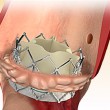Original title: A Systematic Review and Meta-Analysis on Primary Percutaneous Coronary Intervention on an Unprotected Left Main Coronary Artery Culprit Lesion in the setting of Acute Myocardial Infarction Reference: Marije M. Vis et al. J Am Coll Cardiol Intv 2013;6:317–24 Acute myocardial infarction with a significantly compromised unprotected left main coronary artery culprit lesion is relatively rare (4%...
National and Internacional Live Cases at the Next SOLACI-CACI 2024
Discover all the live national and international cases at the upcoming SOLACI-CACI 2024 Congress.
Registration to SOLACI-CACI 2024 is now open
Register now with amazing discounts to the largest and most important meeting of interventional cardiologists in Latin America. WHY TO ATTEND
Initial Complete Revascularization vs. Staged Revascularization in Patients with STEMI and Multivessel Disease
In patients with ST-segment elevation acute myocardial infarction (STEMI) undergoing primary percutaneous coronary intervention (primary PCI), multivessel disease is observed in up to 40% of cases. The optimal timing for revascularizing non-culprit lesions in these patients without cardiogenic shock remains a controversial issue. European guidelines recommend completing revascularization during the initial procedure or within 45 days...
ULTIMATE III: Use of IVUS for Coronary De Novo Lesion Drug Coated Balloon Angioplasty
Percutaneous coronary intervention (PCI) with drug eluting stents (DES) can present limitations, especially in the form of stent thrombosis or instent restenosis (ISR). These findings have furthered the development of drub coated balloons (DCB). The safety and efficacy of DCB have already been shown in the context of ISR and de novo small vessel coronary...
Intravascular Lithotripsy: Outcomes and Trends in the Treatment of Calcified Coronary Lesions
Lately, the complexity of percutaneous coronary artery interventions (PCI) has seen an increase, mainly driven by the increasing prevalence of coronary lesion calcification, which represents a significant challenge for interventionists. Untreated calcification might result in insufficient stent expansion, a high risk factor of thrombosis and instent restenosis. Historically, several devices have been used to treat...
Predictors of DCB Failure in De Novo Lesions
Percutaneous coronary intervention (PCI) with drug coated balloons (DCB) is a viable alternative, especially in patients at high risk of bleeding, side-branch lesions in coronary bifurcation, or in small coronary segments. De novo heart disease treated with DCB has been shown non-inferior to conventional DES stenting, according to the PICCOLETO-II trial. However, these interventions are...
Prehospital Crushed vs. Integral Prasugrel in STEMI Patients with Large Myocardial Area at Risk
Timely percutaneous intervention of STEMI patients effectively reduces MI size and mortality, which currently makes it the first line of treatment. A fundamental aspect is activation and platelet aggregation, which is why, in addition to creating networks to optimize STEMI treatment, prehospital drug treatments have been implemented. The COMPARECrush looked at whether early and powerful...
2 Year Outcomes of Transcatheter Mitral Valve Replacement with Intrepid
Severe mitral valve insufficiency (MI) has been associated to the progressive deterioration of left ventricular function, cardiac and kidney failure, and increased mortality. Complete medical treatment at maximal doses and surgery are indicated. For those at high risk or those with ventricular function deterioration, edge-to-edge repair has been shown an excellent alternative. The use of...
Non-ST-Segment Elevation Myocardial Infarction in Elderly Patients
The world population is aging, and cardiovascular diseases are the leading cause of death in Western countries. It is increasingly common to find patients aged 70 or older with non-ST-segment elevation acute myocardial infarction (NSTEMI). However, this group has been excluded from most studies, and there is not enough information to determine whether a conservative...









